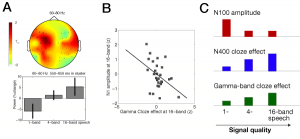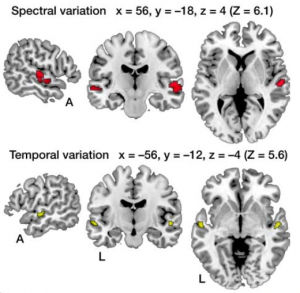This went online just a day before Christmas:
Neuromagnetic evidence for a featural distinction of English consonants: Sensor- and source-space data
by Mathias Scharinger, Jennifer Merickel, Joshua Riley, and William Idsardi
http://dx.doi.org/10.1016/j.bandl.2010.11.002
We wanted to look at featural (categorical) place of articulation distinctions in English consonants, and selected labial and coronal fricatives and glides for an MMN study. In this study, we looked at sensor- and source-space effects of labial deviants preceded by coronal standards and coronal deviants preceded by labial standards, across the two manners of articulation, i.e. fricatives and glides. Note that there are rather dramatic acoustic differences between these manners of articulation: uncorrelated noise through narrow constriction vs. vowel-like sound with typical resonance frequencies. We found consistent place-of-articulation effects, independent of manner of articulation: labial deviants produced larger MMN, contra a directional hypothesis of underspecification, and dipole source locations followed the Obleser-gradient in that labials elicited N1m dipoles anterior to dipoles of coronals in auditory cortex.
References
- Scharinger M, Merickel J, Riley J, Idsardi WJ. Neuromagnetic evidence for a featural distinction of English consonants: sensor- and source-space data. Brain Lang. 2011 Feb;116(2):71–82. PMID: 21185073. [Open with Read]
Speech sounds can be classified on the basis of their underlying articulators or on the basis of the acoustic characteristics resulting from particular articulatory positions. Research in speech perce […]


